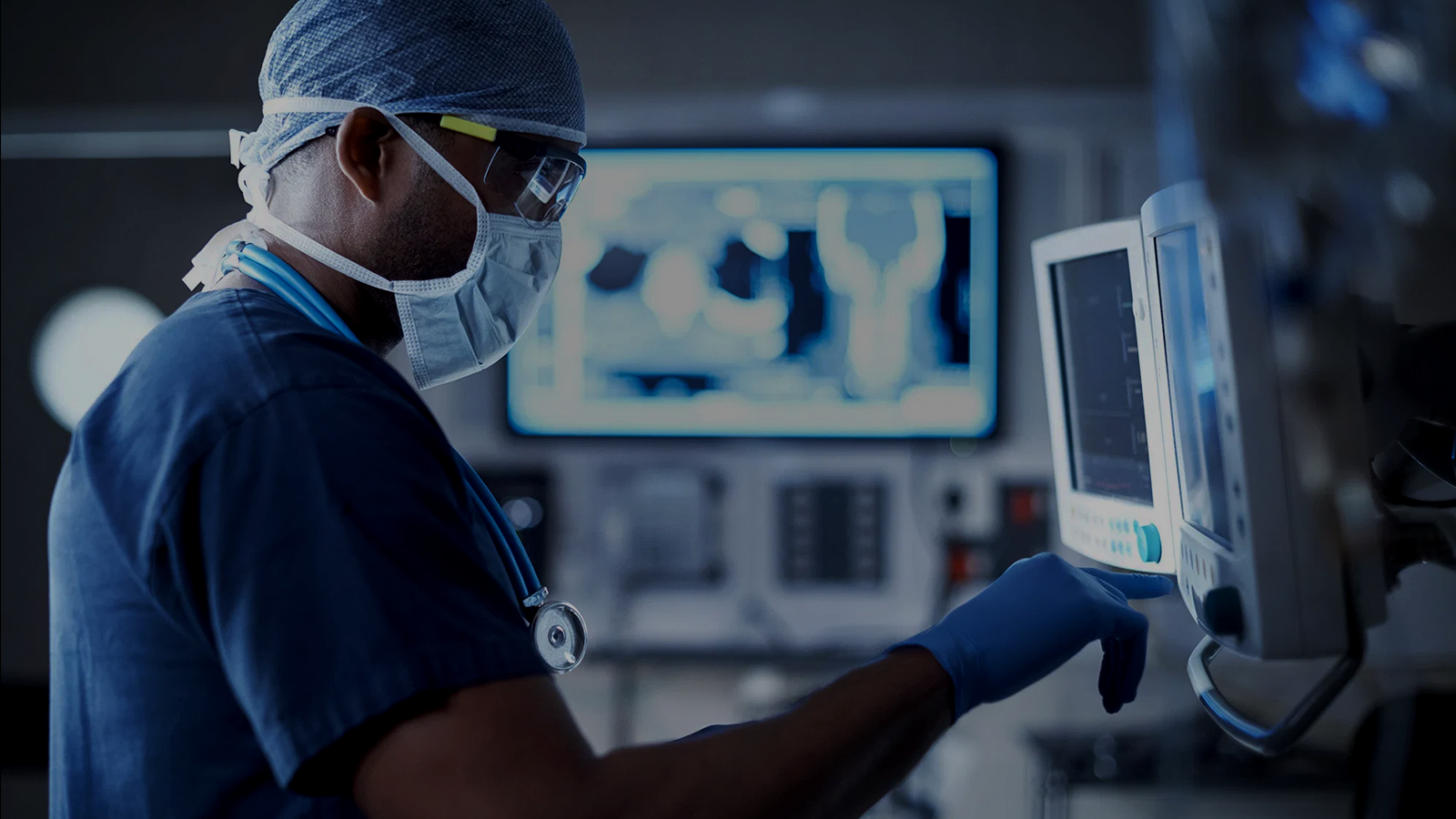Installing patches, maintaining software versions and placing devices on shared network infrastructures are some of the key challenges faced by the professionals in the healthcare environment. As clinical demands are driving medical technology responses to a comprehensive collaborative process rather than a linear one, the efforts have been focused on devising the solutions that satisfy regulatory requirements and patient needs. Innovations in health IT have significantly contributed to meeting the challenges of the health information needs of the industry.
As the cost of care continues to rise, the healthcare industry is constantly feeling the pressing need of a centralized platform for patient care, claims settlement, healthcare information exchange (HIE) and healthcare information systems (HIS). Of late, there has been a paradigm shift in software engineering as the attention has moved to the usability aspects of healthcare systems. Joint-application development focuses on the healthcare project stakeholders so that each party is adequately represented in the requirement elicitation stage. Use case analysis of medical software ensures that the software enforces a workflow and mode of operation that is consistent with an organization’s policies and business vision.
Integrated health information exchange and network
An integrated health network with complicated workflows is required for smooth movement of the patient data on demand. A global healthcare network can fulfill this need of the businesses by enabling faster and better research with effective exchange and use of healthcare information.
The healthcare industry needs an upgraded value of information with ease of access to organize medical statistics to transform the health ecosystem. This includes the efficient use of health informatics which is essentially the convergence of healthcare, IT and business that help in driving better consumer experience.
Health information technology to reduce operational costs
HIE is considered an important objective of health information technology investment by businesses in the healthcare industry due to its potential to improve quality and reduce costs. HIE provides the capability to electronically move health information among different healthcare information systems for providing efficient patient-centered care and help the authorities in analyzing the health of a population.
A robust information technology platform and infrastructure, and availability of electronic health records (EHRs) are needed to transfer health information where it is most needed. The ability of such a platform to exchange patient information across clinical contexts helps in the coordinated and efficient delivery of care.
Global health information network
Keeping track of numerous electronic health records (EHR)/electronic medical records (EMR) of vendors, practitioners, participant agreements and patients across the ever-changing healthcare landscape can be a significant challenge for healthcare professionals and business managers. Doctors’ aggregation platforms, automation suites for hospitals and clinics, and pharmacy management applications are being used to overcome these challenges and manage the revenue cycle for a healthcare facility.
A global health information network platform seamlessly connects disparate data silos and applications, and ensures that they talk to each other. It eliminates the need for paper documentation and supports network-to-network connection in the healthcare industry. With all health information stored at one place on the platform, care providers, patients and pharmacies can leverage a number of benefits, such as:
- Better care coordination and patient engagement
- Improved diagnostics
- On-demand healthcare services
- Healthcare analytics
- Medical practice management and operations
- Financial KPIs and Metrics
- Unlock the value of healthcare data
- Meaningful insight from structured information
Blockchain paving the way for HIE
Implementing healthcare-specific blockchain application protocol that applies cryptography for data protection implementation and smart contracts for data authorization can allow individuals the complete control over their health information. Blockchain increases the security, privacy and interoperability of health data with the proof-of-concept. Though the technology is still not mature, it can lower the costs of health IT by eliminating intermediaries in the ecosystem and improve efficiencies with better healthcare view. Flexsin’s experience of blockchain in healthcare software development extends to smart contract development for coordinating patient records among private blockchains.
A cloud-based, software-as-a-service (SaaS) health information solution can provide self-service onboarding and administrative tools for transparency. The platform can deliver data directly to EHRs and EMRs for streamlined patient care.
Healthcare software architecture models
Three of the most commonly used architecture models for healthcare software are:
Centralized Model
The model stores all the patient data in a single data repository where participants can submit and view it. This model works well for community networks.
Decentralized Model
Data is stored at the point-of-service (POS) and a participant can share the information with other members of the network. The model effectively resolves the data ownership issue.
Hybrid Model
It combines features of both centralized and decentralized models. Its critical care coordination and health management tools allow for easy addition and extraction of EHR data to the central repository.
Today, the software engineering in health care (SERC) community faces the challenge of architectural flexibility and grounding in fundamental risk management principles. Architectural flexibility in a health information system can be achieved with the help of component-based systems with exchangeable plug-and-play components. Object middleware standards such as CORBA can be used to configure the framework for developing distributed applications. Emerging component technologies such as DCOM and EJB are often used to integrate heterogeneous and autonomous components on a platform.
Building healthcare software components that talk with each other
However, the precise specification of syntax and semantics of the components’ interface is needed for the healthcare software components to become reusable. For this, developers need to build components on the basis of common context, incorporating a functional decomposition of the application domain. An application designer can make use of a generator tool for developing new applications utilizing iterative software engineering process.
Component technology is gaining primacy in healthcare software development as standards for technical and semantic interoperability by healthcare IT vendors. As plug-and-play components may not be readily available, using standard interfaces such as DICOM and HL7 to convert data into an appropriate format offers a workable step towards an incrementally evolving healthcare information solution. The use of HL7 interoperability standards facilitates for standardized communication between programs and systematic sharing of healthcare data among different healthcare facilities on a global scale.
Master patient index (MPI)
A master patient index (MPI) connects a patient’s records with more than one database, and allows different departments to share the patient data simultaneously. An MPI can create an index of all medical records for a specific patient, thus allowing for quick and painless access of data when needed. It is used by large practices so that the data can be used by different departments and labs later.
Patient portal
The patient portal allows the patient to access their complete medical history, treatment and medications. One can schedule an appointment, message their doctor and make payments online. This way, a patient has more control over their healthcare regimen. Once can log into their account and schedule an appointment at their convenient time. The portal provides consumers more transparency and accessibility, which makes it a lot popular.
Medical billing and RCM
Medical billing software is a useful tool for busy hospitals as they have little time to spare for revenue cycle management (RCM). The software can efficiently handle the entire billing workflow process, and can also handle insurance claims and verification. It will also alert you in case of late payment and allows for real-time eligibility evaluation and submission of insurance claims. It can be used for point-of-care payment processing for copays, deductibles and coinsurances, and can be automated for follow up requests to drive patient engagement.
ePrescribing
Sending prescriptions to pharmacies can be tedious, especially when the number of patients is large. ePrescribing can be used by caregivers to send prescriptions to pharmacies for filling. The patient just has to go the pharmacy to collect their prescription, or get it home delivered. This way, practitioners will be able to save time responding to prescription refill requests and focus more on the pressing issues at hand.
The development of a tool-based healthcare application must be seen in the broader context of a participatory software engineering process in which the developer or designer works with the client to know about the specific workflow requirements and adapt the application to end-users’ needs.
Ensuring regulatory and compliance standards
Flexsin Technologies can help you with the implementation and interfaces for public and private HIEs with its network architecture development services. We integrate HIEs with common coding databases that meet healthcare technology communication standards. Our third party vendor implementation services integrate APIs to leverage community-developed HIEs and ensure compliance with regulatory standards including HHS, HIPAA, ONC-ATCB and more.
We ensure that your healthcare software complies with regulatory standards such as HHS and ONC-ATCB. Our powerful and feature-rich HIE solutions provide secure and reliable healthcare information exchange between patients, doctors, insurance companies and medical authorities. The centralized platform allows for secure storage, access and sharing of data among the stakeholders.
Software with a healthy value
If your facility provides specialized care, such as for cancer, dentistry, gynecology or trauma, make sure that your area of treatment is supported by your software as many off-the-shelf software do not support specialty facilities. Custom software development ensures that you get the software with needed features and functionalities to augment your specialty care functions.
Custom software with intuitiveness
Our expertise in developing platforms and applications across the healthcare software spectrum including web and mobile applications for cancer care make Flexsin Technologies a trusted partner for healthcare software development. Our healthcare software developers are available for hire for outsourcing services, custom healthcare software development and healthcare application development. Our experts aim to create solutions that usher in intuitiveness in the solutions we provide to our clients.
Contact Flexsin Technologies for a no-obligation evaluation of your healthcare software needs.


 Jeet
Jeet


